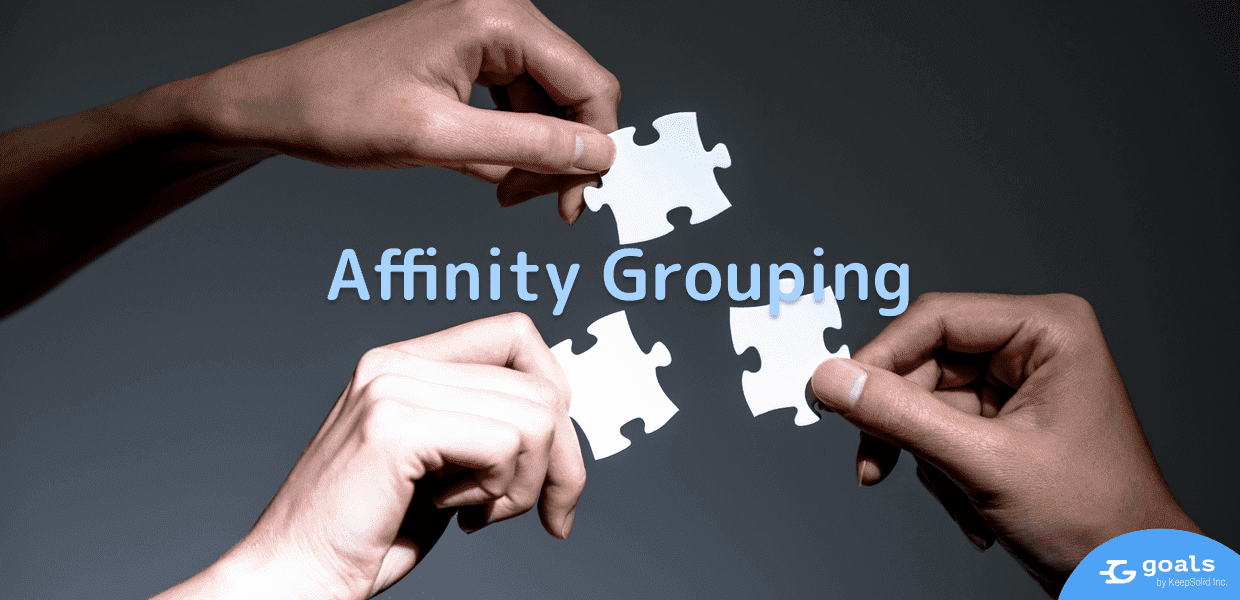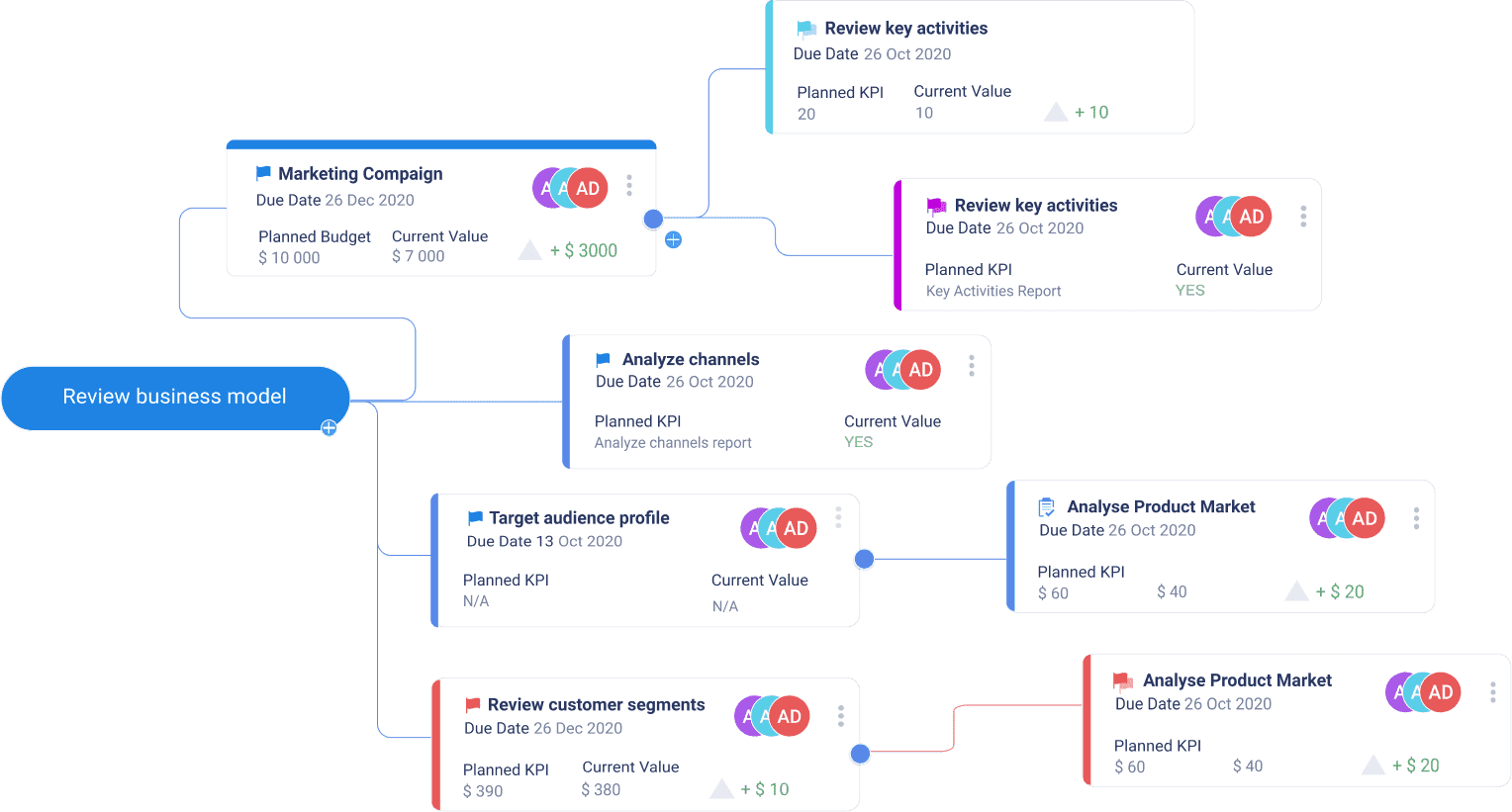What is Affinity Grouping?
Affinity grouping is the practice of grouping pieces of non-numeric data based on shared similarities. Though it might sound complicated, the core of this technique is simple and quite intuitive. The team has a brainstorming session to outline several ideas and then works together to sort them into thematic groups, or clusters.

Usually, affinity grouping is linked to collaborative prioritization, where after establishing several “affinity groups”, the team ranks each group by voting on their priority. As a result of this activity, the team comes up with an organized and prioritized list of ideas.
Affinity process
The affinity process is usually the focal point of any brainstorming meeting. Aimed at sorting all generated ideas, suggestions, and speculations into a limited number of themes, it involves everyone, promoting constructive discussion and debate within the team.
At its first stage, the team physically records all pieces of data on a small card. After the team feels that they have written down all possible ideas, they start going through the ideas one by one and looking for themes.
The first idea creates the first affinity group. All other ideas go in the same group if they have a similar theme or form a new group if they have no similarities to any of the existing groups. As the team moves forward, natural patterns emerge, and items begin to interconnect.
Finally, the team votes on which groups should be prioritized over others and which actions should be taken.
When it is used
As a common brainstorming and prioritization technique, affinity grouping has multiple applications. It is a flexible technique that allows items to be sorted based on theme that makes sense for a business, such as which department they should go to, which objective they support, or which product line suits them best.
For example, it can be useful for product teams conceptualizing new projects and features. Besides, it is an excellent opportunity to unite members from different functional departments and take control over the product roadmapping.
Similarly, affinity grouping is a great tool to process various surveys and polls, for example customer or employee feedback.
Common challenges
Simple as it is, affinity grouping requires a lot of effort from the manager or the team leader who needs to encourage every team member to participate, keep the momentum of the activity going and supervise the voting process.
It requires time management skills, stamina – sometimes the affinity process can take several hours, but also tact and positivity to get participants verbalize their ideas and resolve possible conflicts.
Takeaways
A productive brainstorming session can leave you with dozens, or even hundreds, seemingly random and disconnected ideas. Affinity grouping helps distill them into actionable goals by reducing their amount to a manageable number of thematic groups and then mapping the resulting clusters to prioritized tasks.



